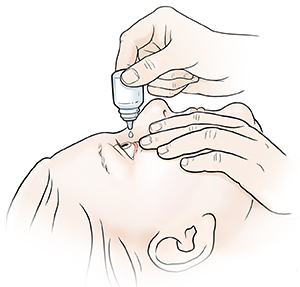Treating Uveitis
Treating Uveitis

Relieving the symptoms
With treatment, symptoms often go away in a few days. To help ease your symptoms, your eye doctor:
-
Will use eye drops to enlarge (dilate) your pupil. This helps ease pain. This will make your eyes sensitive to light, so wear sunglasses while taking the dilating drops.
-
May prescribe eye drops, ointment, or medicines by mouth (oral). These can help reduce swelling and inflammation. Use these as directed. Ask about any side effects.
-
May inject medicine around or into your eye.
Treating the underlying cause
If the cause is known, your treatment will depend on the underlying condition. But the cause of uveitis is often not known. In this case, your eye doctor will likely treat you with anti-inflammatory eye drops, oral medicine, or shots. Uveitis is often linked with inflammatory problems in other parts of the body. These include some kinds of arthritis and inflammatory bowel disease. If needed, you may be referred to another provider. He or she can check you for any health problems linked to the uveitis. This provider may also oversee treatment with powerful oral medicines.
Updated:
January 20, 2020
Sources:
Uveitis: Etiology, Clinical Manifestations, and Diagnosis. UpToDate.
Reviewed By:
Bogus, William J., OD, FAAO,Haupert, Christopher L., MD